Last Chance to Catch NYC's Holiday Notalgia Train
We met the voices of the NYC subway on our nostalgia ride this weekend!


At the epicenter of the coronavirus crisis, New York City has quickly adapted to stop the spread of the pandemic. From the completion of a temporary hospital at the Javits Center to the closure of non-essential businesses, the result has been a noticeable emptying of the city. While New York City parks remain open to the public, concerns about New Yorkers continuing to gather there led to a pilot project to close off some streets to cars. As such, the streets of New York City appeared a bit different starting this weekend — from people walking their dogs in the middle of major roadways to people skateboarding down Park Avenue.
Small sections of four streets in Manhattan, Queens, Brooklyn, and the Bronx were shut down starting Friday to vehicle traffic as part of a new pilot program, which aims to uphold social distancing and to take pressure off of major parks. From 10 a.m. to 7 p.m. from Friday to Monday, these four streets are converted into pedestrian walkways monitored by police to ensure social distancing protocols are met. It has not been made clear yet whether the pilot will continue past today, so check it out today if you are curious.
 All photos by Ryan Lahiff unless otherwise noted.
All photos by Ryan Lahiff unless otherwise noted.
The pedestrianized streets are Park Avenue in Manhattan between 28th Street and 34th Street; Bushwick Avenue in Brooklyn, between Johnson Avenue and Flushing Avenue; 34th Avenue in Queens, from 73rd Street to 80th Street; and Grand Concourse in the Bronx, between East Burnside Avenue and 184th Street were converted into pedestrian corridors. The city intends to analyze activity on these streets and potentially add more streets to this pilot. Additionally, new protected bike lanes on Second Avenue in Midtown and Smith Street in downtown Brooklyn were installed to protect bike riders.
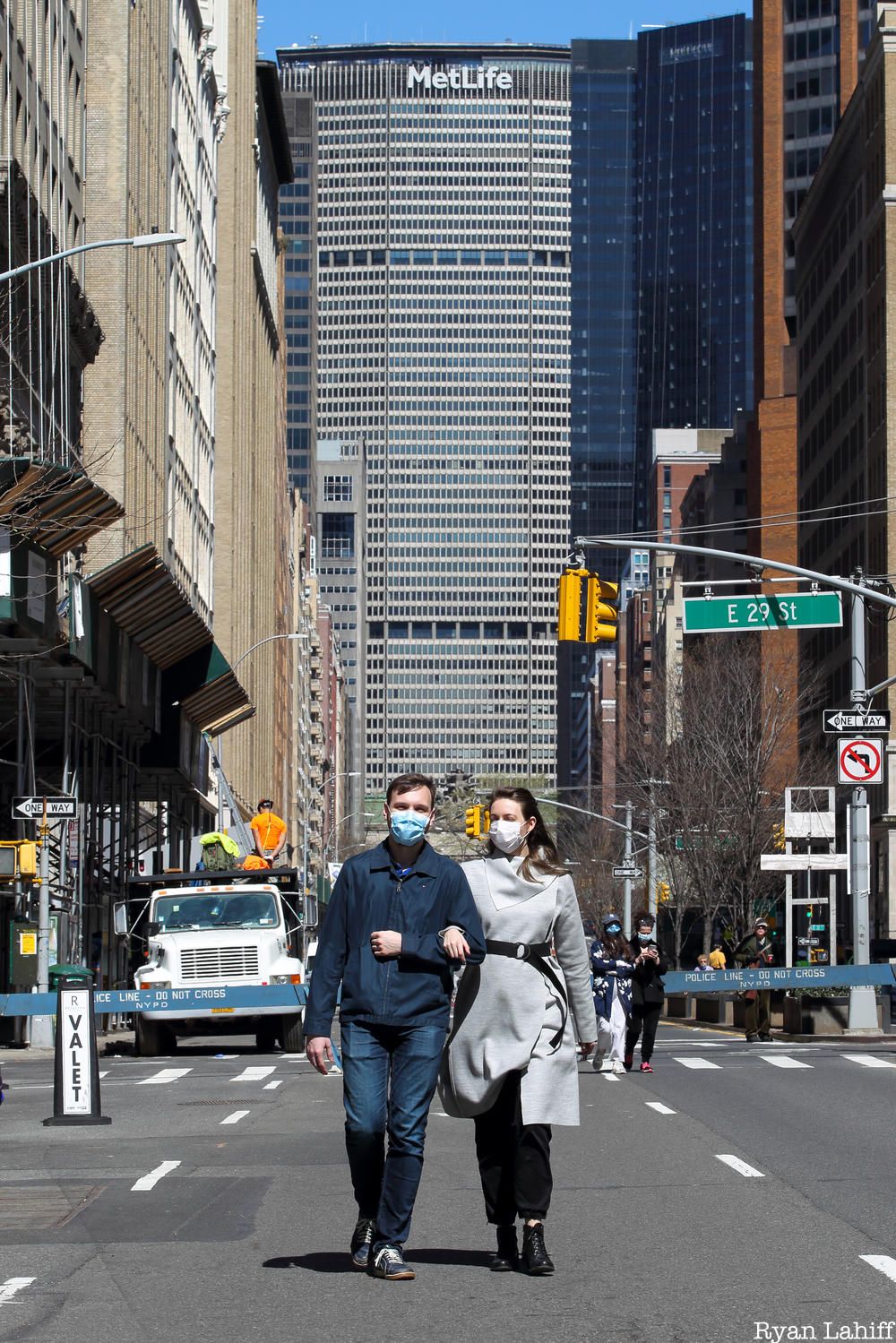
“If we’re going to look to have a street that’s opened up for recreation, we’re going to do that very smartly and carefully because we have to attach enforcement to it,” Mayor de Blasio said in a press conference. “It cannot be, oh, we’re just going to close off some streets and leave it be. If we do that, I guarantee what will happen is a whole lot of people start to congregate.”
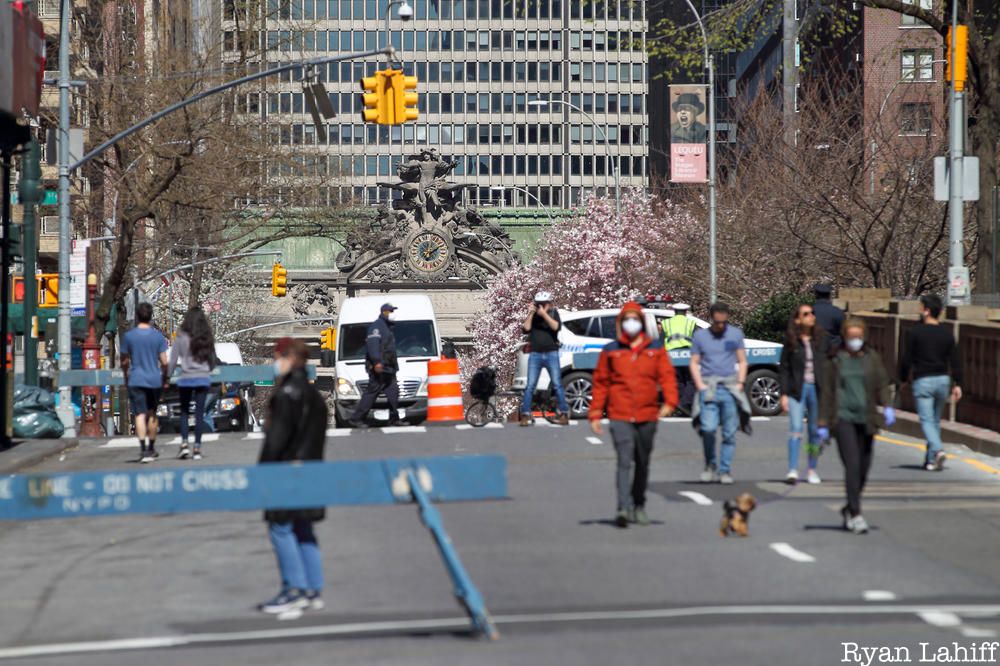
Yet, the closed off roads account for just 1.6 miles of New York City’s 6,000 miles of roads. According to photographer Ryan Lahiff, a photo contributor to Untapped New York who visited the Park Avenue car-free stretch on Friday and took these photos, “It was far quieter than I’d expected on a very sunny Friday afternoon, certainly far quieter than Central Park was yesterday afternoon when I went for a quick walk. Everyone on Park Avenue was in a pretty upbeat spirit, quite a few kids enjoying the new found space to ride their scooters, and I noticed a few joggers running from one end to the other, then turning around and coming back again.”
Aaron Asis, another Untapped New York photographer and our artist in residence (who will be doing a virtual talk tomorrow with us!) went on Saturday, and despite the weather, found runners, casual walkers, even a man in a wheelchair walking his dog.

Polly Trottenberg, New York City’s transportation commissioner, wrote in a Daily News op-ed article that although there are a growing number of coronavirus cases, this pilot program would help alleviate the stress going outside, especially with decreased driving and increased bike riding throughout the city. In each borough, we looked for wide streets with adequate room for social distancing in dense neighborhoods that lack open space,” Trottenberg wrote. “We also looked for streets that did not have hospitals or function as bus or truck routes, which are now carrying critical workers and supplies.”
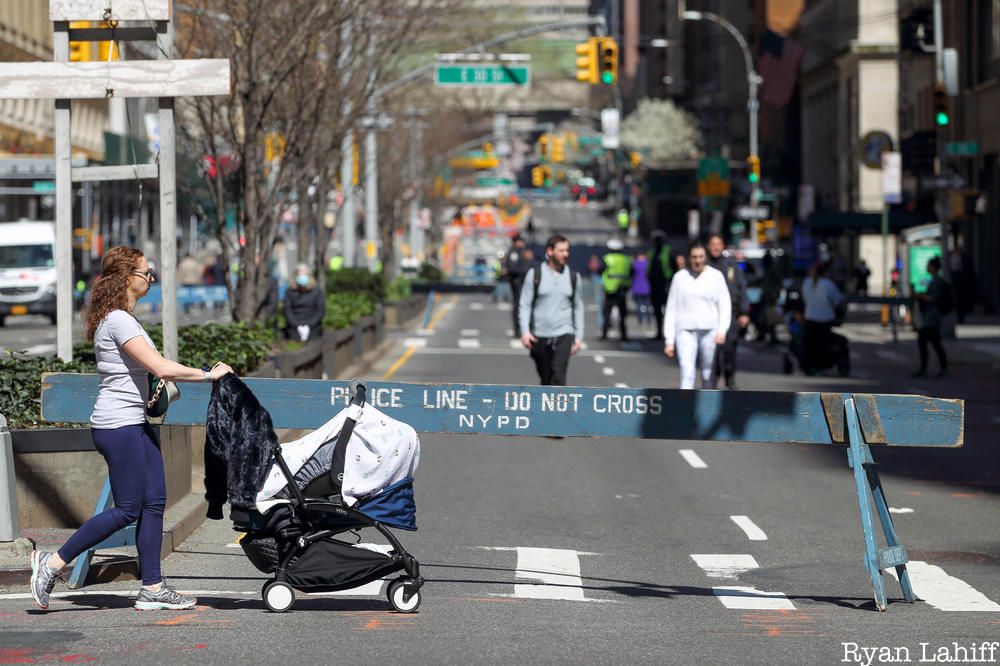

However, the new pilot program has been met with criticism from officials and the New York community, some of whom argue that closing just 1.6 miles of the 6000 total miles of roads in New York City will do little to prevent the spread of the virus. Manhattan Borough President Gale Brewer countered in her daily news update, “Six blocks of street closure falls painfully short of what we need. Not only will this short stub do very little for those in the nearby area, but it will do absolutely nothing for those in other neighborhoods. I hope the Mayor will recognize the magnitude of the problem as the weather warms and closes many more stretches of streets across Manhattan to ensure many more neighborhoods have access to safe spaces to move and social distance.”
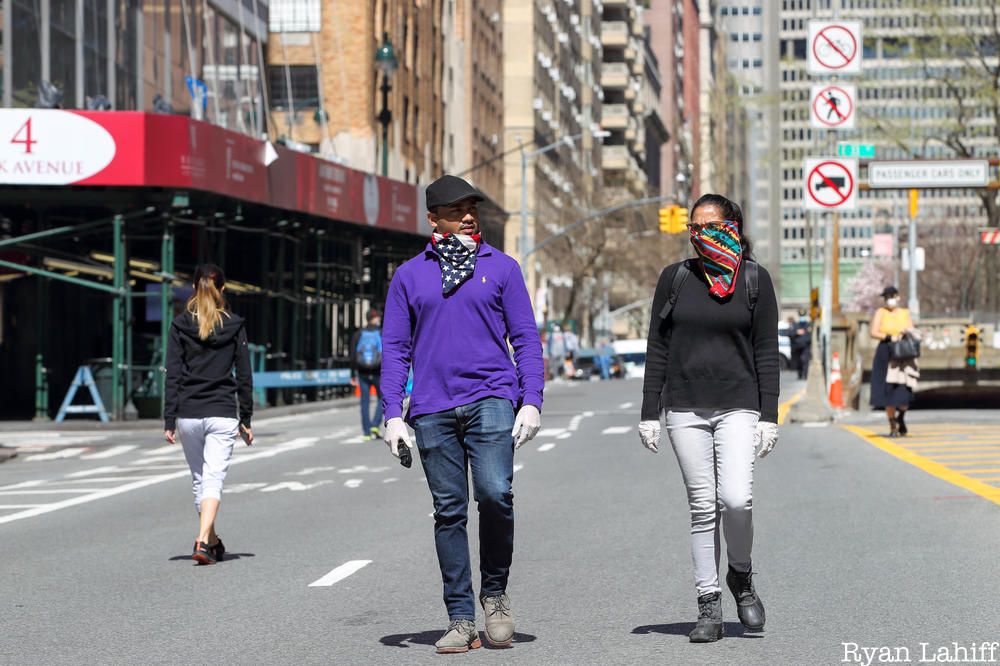
Curbed New York editor Amy Plitt writes in her “New Yorkers need space for social distancing. Let’s open more streets to pedestrians,” that social distancing cannot happen effectively with just four closed roads, especially when people continue to frequent parks, grocery stores, and apartments. “But four locations hardly feels like enough. Six blocks in Manhattan, in a part of town that is already close to several parks, doesn’t feel like enough,” Plitt wrote. With more roads closed, Plitt argues, people can more safely go outside for daily essential tasks like doing laundry, buying groceries, or just going on a walk.

Overcrowding still remains a major issue for many city residents, and despite Mayor de Blasio’s fear that more people will gather together if more streets are open, many city residents feel that closing more roads will allow people to more effectively practice social distancing protocols.
For Danny Harris, Executive Director for Transportation Alternatives, New York has not done enough to protect people leaving their homes due to New York’s cramped nature. “Right now, New Yorkers are competing with traffic, parking, garbage, scaffolding, and narrow sidewalks to get around safely,” Harris Tweeted. “We have an incredible underused resource of 6,000+ miles of streets, we can do better than a limited “pilot” on .03% of them. This is a crisis, and while we appreciate and acknowledge the constraints on our city, now is the time for bold action to keep our neighbors safe.”

Yet others believe that closing down just 1.6 miles of road may pose an even greater threat to people’s health and safety. On Staten Island, which has experienced no road closures yet as part of this pilot, people continue to frequent parks in groups, and Senior Opinion Writer for the Staten Island Advance Tom Wrobleski writes that closing more roads off would potentially increase the amount of people leaving self-quarantine.
“Closing roads and giving them over to pedestrians isn’t going to eliminate the number of people in public parks,” Wrobleski wrote. “It’s just going to add to the overall number of people who are out and about when they’re not supposed to be.”
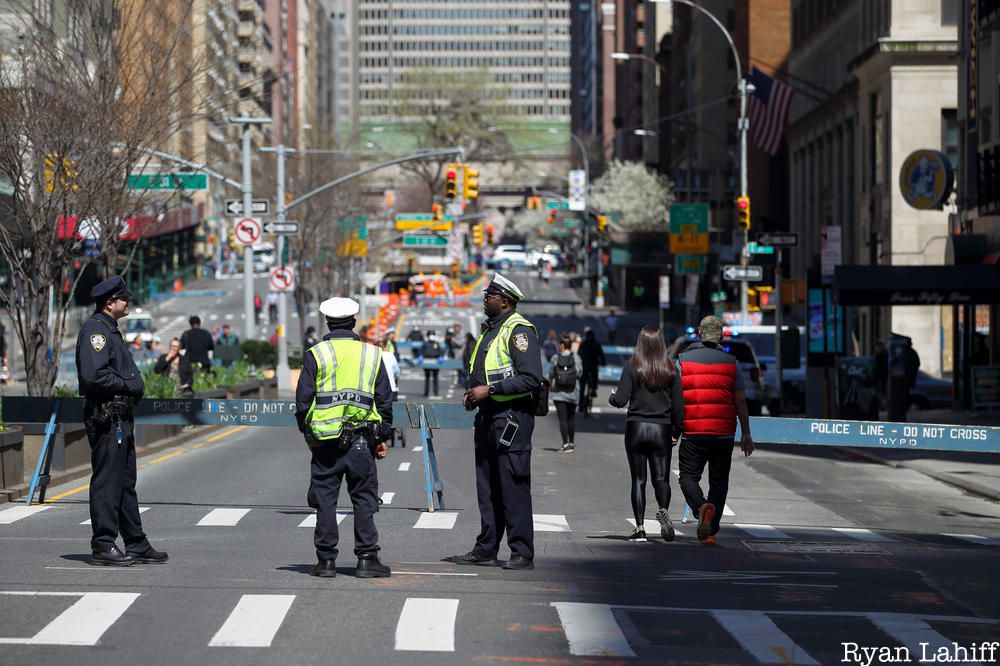
Yet for those members of the community who feel as though New York is not doing enough to increase the amount of public spaces for people to safely walk outside, Trottenberg notes that the city must carefully consider each step and each initiative to protect the safety of everyone. “I ask them to consider the challenges that all city agencies on the front lines — not just at home with laptops — face at this moment,” Trottenberg wrote. “We will continue to do all we can transform our streets, but as this virus continues to take its toll on us all, please remember that city employees are not an inexhaustible resource.”
Next, check out the USNS Comfort ship that just arrived to NYC!
Subscribe to our newsletter